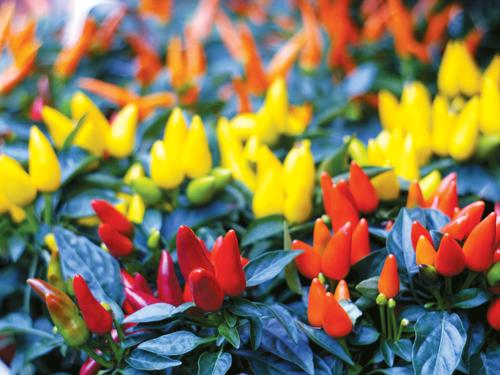Phuket Gardening: Treasures in your garden

PHUKET: If you asked a stranger propping up a bar why he lived in Phuket, he would probably reply – in no particular order – the girls, the climate, the easy, smiley lifestyle and the cheap cost of living. I doubt he would mention the all-too ephemeral beauty of the place, or the sheer convenience of life on the island. Indeed, he might complain that the bars were all too often closed. But that is a myopic view when one considers all the compensatory freedoms, the absence of regulation or restrictive laws of almost any kind.
Take pharmacies for example: their distinctive green and red signs are on display on practically every street. And they dispense almost anything that is medicinal or quasi-medicinal, from paracetamol and valium to those ubiquitous diamond-shaped emerald pills that fortify the over-fifties. True, they have stopped selling temazapam, a powerful sleeping draught that was becoming too notorious for its associations with spiked drinks, unconscious victims, and an escalation in rapes and thefts.
But more bizarrely, pharmacies are now being randomly raided to see what kinds of cough mixture they are selling. Why?
Because certain cough preparations combine with locally grown kratom leaves to make, so it is claimed, a concoction that delivers a nice “buzz”.
Of course, the leaves of the kratom tree, like the nuts from the betel palm, the roots of the ginseng plant, or the vastly more addictive resin of opium poppy heads, have been used since time immemorial in tropical countries as mild narcotics or stimulants, and long before the advent of pharmaceutical companies, their attendant pharmacies and a world-wide culture of pill-popping.
In fact, these very same companies are now realizing, by virtue of exhaustive research, just how invaluable a resource all these natural remedies are, how right indigenous people were (and still are) to use them, and how crucial these ingredients are in the battle to maintain health and vitality in an aging global population.
There are apparent contractions. For while so many of your garden plants have toxic leaves, berries or fruits, especially members of the vast apocynaceae genus, those same chemicals, properly handled and processed, can be used to treat a wide and ever-growing range of life-threatening conditions, including high blood pressure, heart abnormalities and even some forms of cancer. So not merely relatively simple ailments such as flatulence, indigestion, nausea or skin conditions..
In any case, some of these beneficial plants are not poisonous. Take humble garlic (kratiem), long employed as a key flavor in Thai cuisine. Not only a powerful intestinal cleansing agent, it has cardiovascular benefits, thanks to the presence of allicin, a substance that promotes better blood flow.
My partner, like so many Thais, has a passion for chili peppers. A meal without the addition of chili powder or paste is no meal at all. When she comes to the UK, you can be sure that, included in her baggage, is her own supply of ground chilies. Capsaicum is the name of the active ingredient in these fiery fellows; apparently it not only helps to release endorphins which can contribute to a sense of well-being, but also stimulates the cardio-vascular system. No wonder she values them.
Now few experts would deny that most so-called “folk” medicines do indeed bestow tangible benefits. After all they have been tested over eons.
Many members of the solanum family including S trilobatum, a member of the aubergine family which has small shiny fruits and which often grows wild in Thailand, is particularly cherished in India, where it is used to treat asthma and other respiratory ailments. Turmeric, whose tuber is more familiar in fresh markets as a yellow colorant for rice, has a relative called curcuma comosa which has been long used by Asian women with gynecological problems.
Every part of the cassod tree (cassia siamea) has medicinal uses, the bottle plant is said to treat gout, while even the humble papaya contains a protein digesting
enzyme. The list goes on.
Tip of the week – Visual evidence
It is always a good idea to have photographs of plants you intend to buy. A picture is worth a thousand words, they say. Most plant books have photographs of each flower that is discussed. Alternatively, keep images of flowers you have snapped or retain photographs you have seen on this page.
Knowing some basic Thai words also helps. Here are a few [phonetized] Thai versions: ton = tree; dok = flower (as in dok bua = lotus); ya = grass.
Common flower names include: pootaraksa = canna lily; fueng fa = bougainvillea; cha baa = hibiscus; boisian = crown of thorns; kluay = banana; mamuang = mango; dok kaeo = orange jasmine; mok baan = wrightia; yi huup = magnolia; thien yod = duranta repens.
Botanical names [as with the last mentioned name] are mostly Latinate and are universally used by horticulturalists. Worth remembering.
If you have a question or a garden that you would like featured, you can email the author here.
Keep checking our online Phuket Lifestyle pages or join our Facebook fan page for regular gardening features and tips.
— Patrick Campbell
Latest Thailand News
Follow The Thaiger on Google News:


























